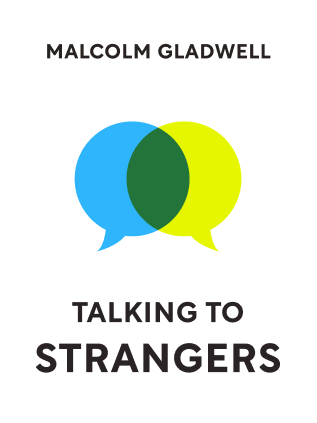

This article is an excerpt from the Shortform book guide to "Talking to Strangers" by Malcolm Gladwell. Shortform has the world's best summaries and analyses of books you should be reading.
Like this article? Sign up for a free trial here .
Are you looking for Talking to Strangers book club questions to help you understand the book’s key concepts and ideas?
Talking to Strangers is a non-fiction book by Malcolm Gladwell about the biases that are inherent in our communication with strangers. These Talking to Strangers book club questions can help you reinforce your understanding of the book’s main concepts by reflecting on your own interactions with strangers.
Try these Talking to Strangers book club questions and exercises.
Talking to Strangers: Book Club Questions
The most common strategies people use when interacting with strangers are default to truth, assumption of transparency, and neglect of coupled behaviors. These six Talking to Strangers book club questions are designed to help you reinforce your understanding of these concepts by reflecting on your own interactions with strangers.
Question 1: Consider a time that you suspected a stranger was lying to you. What ultimately triggered you to doubt that person’s honesty? How long did you harbor doubts about that person before you reached your trigger point?
Question 2: Based on that memory, how sensitive do you think your trigger point is when dealing with strangers? In other words, are you a very trusting person who needs a lot of doubts before being triggered to suspicion or are you a skeptical person who reaches the trigger point quickly when dealing with strangers
Question 3: How do you think that your natural trigger point affects your social interactions with strangers? Have you ever lost out on the opportunity to make a meaningful connection because you made a hasty first impression?
Question 4: Think of a time that you’ve had a meaningful conversation with a stranger. What did you talk about? What impression or conclusions did you make about the stranger based on your conversation?
Question 5: Now that you’ve learned the common strategies you were probably using to make draw those conclusions, try to go back and identify them. In other words, write down any times that you defaulted to truth, assumed transparency, or neglected to consider the context of that interaction.
Question 6: In listing the (very human) mistakes you might have made during that interaction with a stranger, how did your impression of the stranger change? What complexities of that stranger’s character did you fail to see?

———End of Preview———
Like what you just read? Read the rest of the world's best book summary and analysis of Malcolm Gladwell's "Talking to Strangers" at Shortform .
Here's what you'll find in our full Talking to Strangers summary :
- Why we don't understand strangers
- How to talk to strangers in a cautious way so you don't get fooled
- How Hitler deceived so many world leaders






